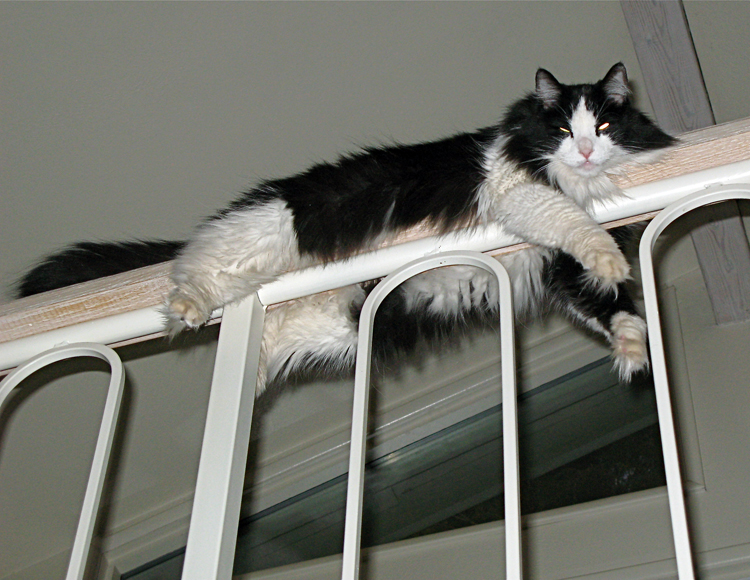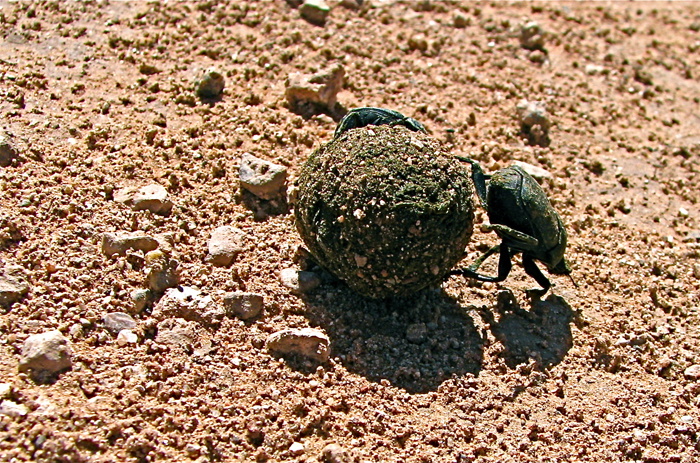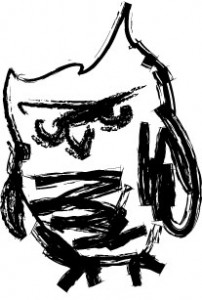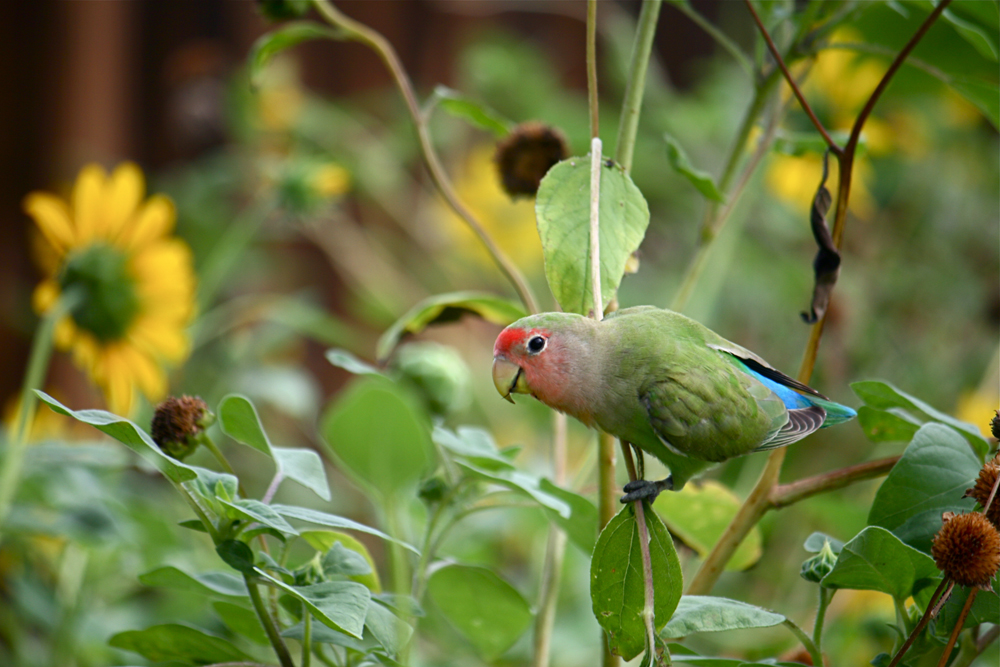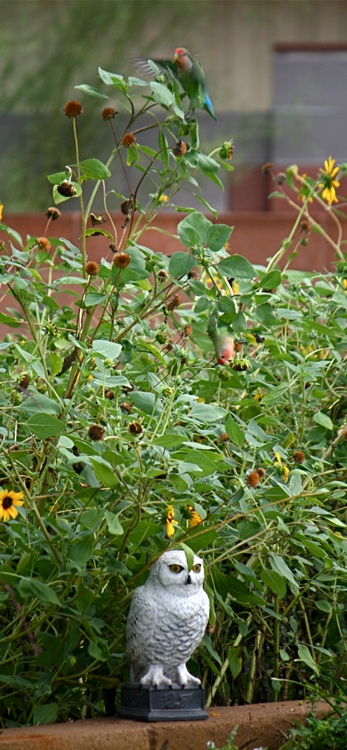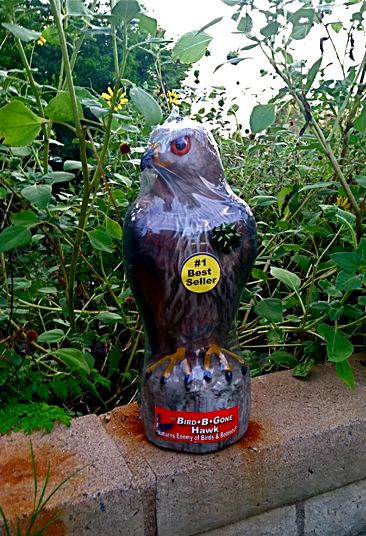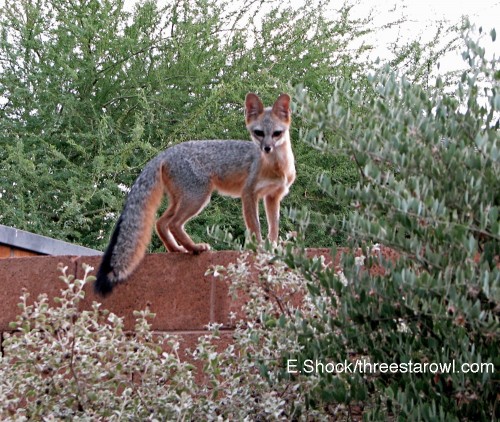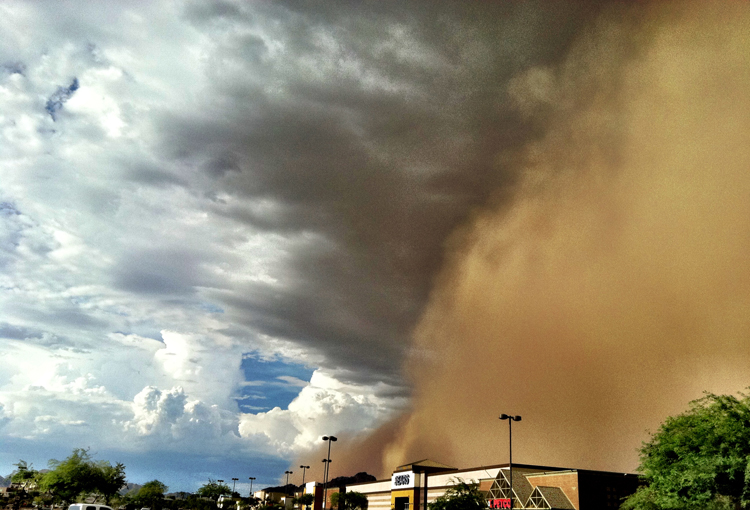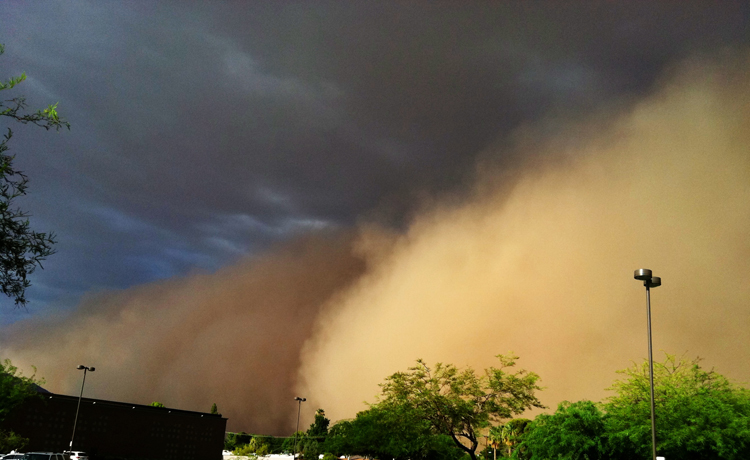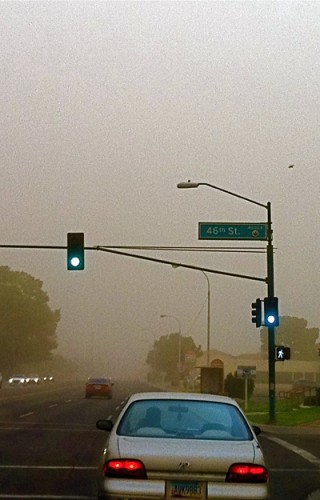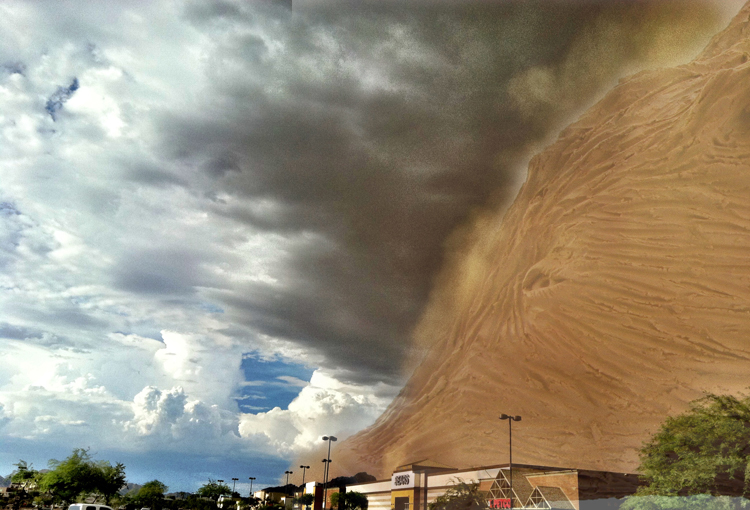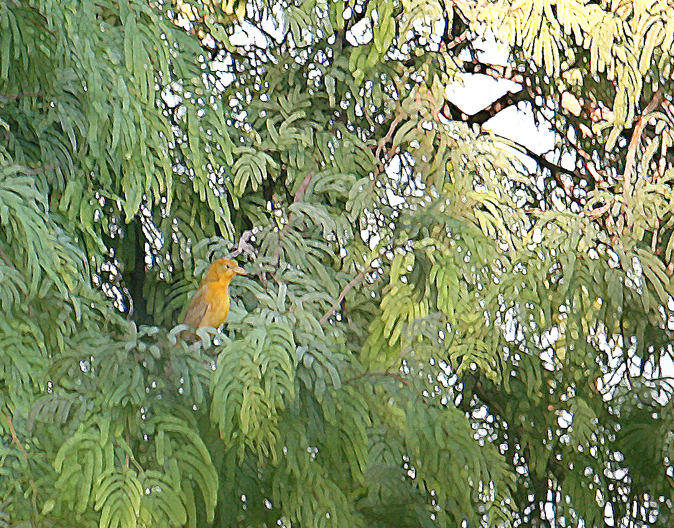 The recent storms washed out the dust and the worst of the heat, even rinsing the moisture from the air. Plants, lizards, soil, and birds are refreshed, drinking up the free water and puffing out with infant leaves and fresh plumage, strong and bright like spring’s new sprouts, a second spring before winter.
The recent storms washed out the dust and the worst of the heat, even rinsing the moisture from the air. Plants, lizards, soil, and birds are refreshed, drinking up the free water and puffing out with infant leaves and fresh plumage, strong and bright like spring’s new sprouts, a second spring before winter.
The migrants are coming through, and most days bring a few tourists into the yard: a turkey vulture, pumped up numbers of lesser nighthawks, a green-tailed towhee, wilson’s warblers, and, this morning, the “chick-a-brrr” of a first year summer tanager (photo above). Following the distinct call, I spotted him in the neighbor’s 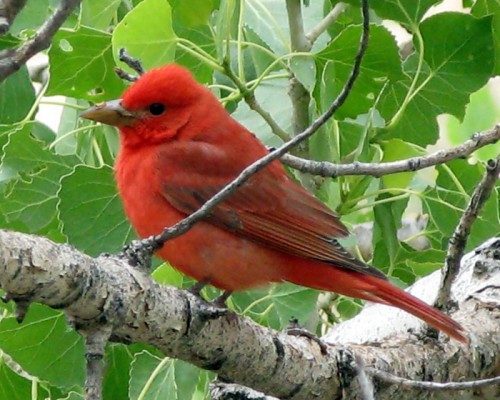 Lysiloma tree, not yet displaying his distinctive red plumage, but glowing none the less in the warm golds of his basic plumage. Next summer, he’ll look like this >>
Lysiloma tree, not yet displaying his distinctive red plumage, but glowing none the less in the warm golds of his basic plumage. Next summer, he’ll look like this >>
(above, Photoshop-altered photo and, right, adult Summer tanager in Zion NP, photos A.Shock).
There are Young of the Year everywhere: western whiptails with their twinkling blue tails, tiny tree lizards, popping fearsome pushups hoping to bully their own shadows, and, I’m happy to report, at least one “Cornerhead”: an immature male Costa’s hummingbird is holding the palo verde feeder and bravely chasing off all interlopers, shooting out from his shadowed day perch like a miniature gray cannonball. His purple moustaches are incomplete, as yet visible only as dark brackets at the lower corners of his head, giving rise to the nickname. All summer I saw female Costas, while the local male only made infrequent appearances. But, here is his progeny, in charge of one of the usual niches of Mr Moustaches before him, under the big palo verde. He’s welcome — last winter’s hard freeze took its toll on our yard’s population of Costa’s, and I’m glad to see their number rising again.
There are other “lazarus” tales in the garden: the African Sumac — a tree I never rooted for until ours lost all its leaves inexplicably and was given a death sentence by the experts — is showing signs of life, after six months of languishing. The tree is not clearly out of the woods, so to speak, but appears to be heading into the cooler weather with a thin crop of curling baby-leaves. It’s such a heroic goal-line stand I hope for its sake that this winter is a mild one.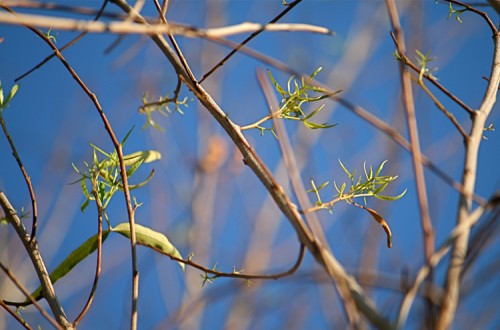 I’m reluctantly fond of this multi-trunked vegetable — it’s from this tree that the Elf Owl glared down at me, two Septembers ago. Not such a good hiding place for a shy owlet this year!
I’m reluctantly fond of this multi-trunked vegetable — it’s from this tree that the Elf Owl glared down at me, two Septembers ago. Not such a good hiding place for a shy owlet this year!
>> minute miracle leaves on the abominable sumac
Another tree given a potential second chance is a large mesquite that blew over during a recent drenching, windy storm. Initially given an expert’s thumbs down, a kind man with a chain saw (!) thought he could prune it in such a way it might be salvageable. Again, nothing’s sure yet, but there it stands, a spindly remainder of its former grand self. But the doves, finches, and quail don’t seem to mind. They perch in it like before, loafing between feeding sessions in the mesquite’s two remaining branches, like highly visible off-season Christmas ornaments. Maybe the tree will make it. Mesquites are stubborn organisms. At the end of a hot, tempestuous monsoon season in the desert, fall exhales a kind of optimism that elsewhere is reserved for spring. We’ll see…




 Allison does not consider herself a wildlife artist,
but an observer who takes notes in clay.
Allison does not consider herself a wildlife artist,
but an observer who takes notes in clay.
